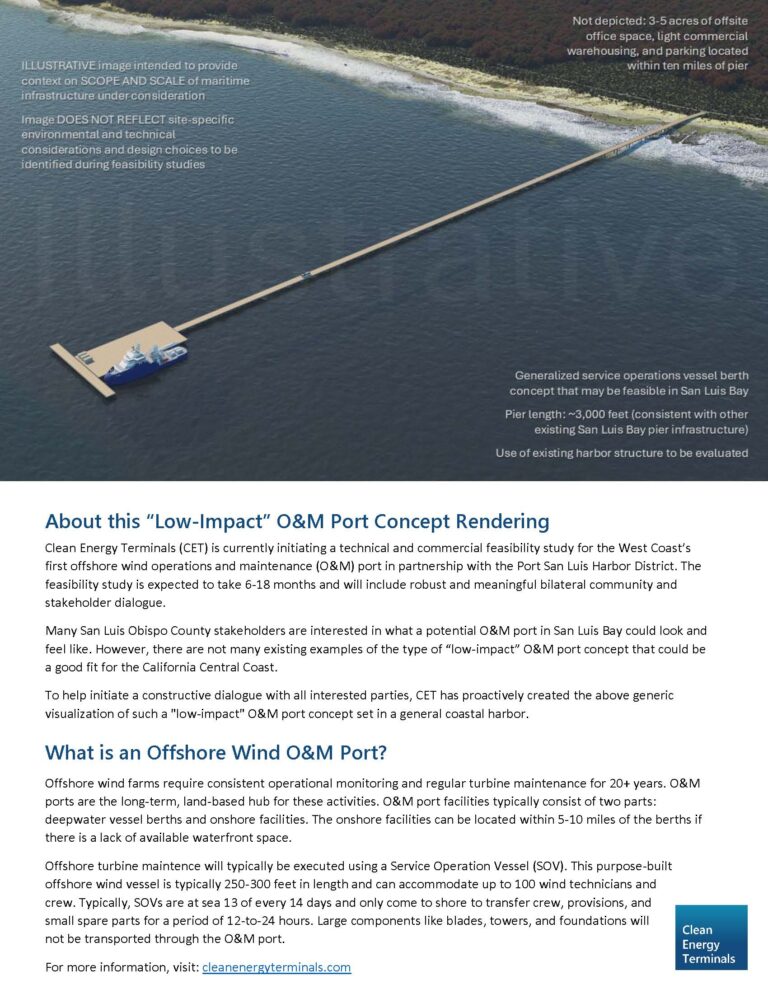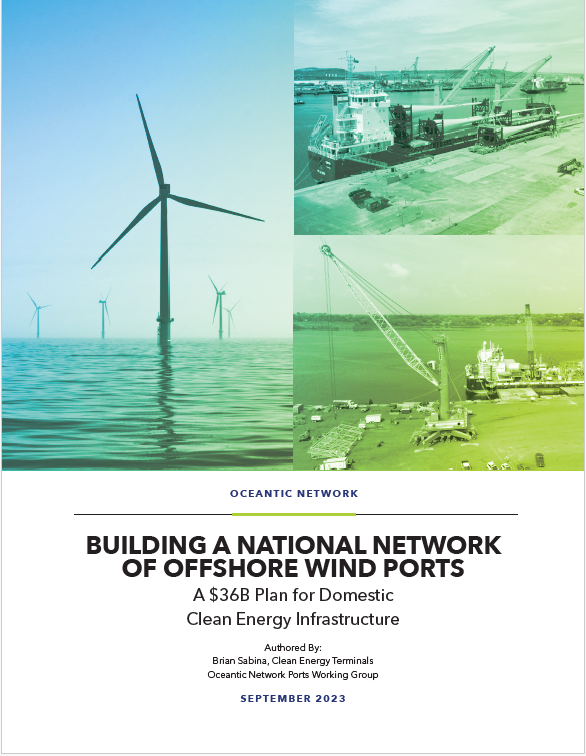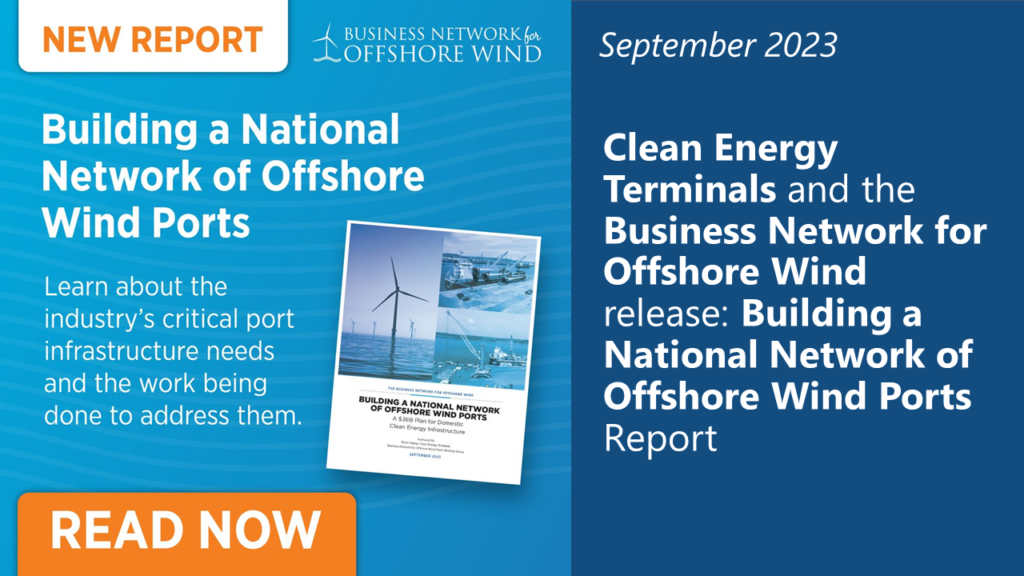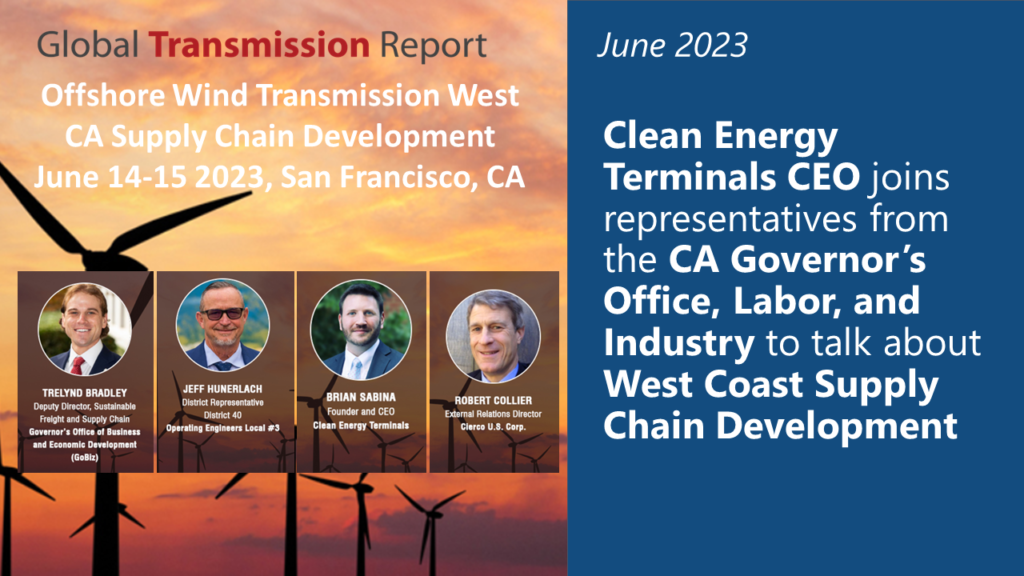Developing the port infrastructure needed to deploy offshore wind
Clean Energy Terminals is a project developer focused on port projects that unlock clean energy generation, create long-term jobs, and enable new local economic benefits.
About Clean Energy Terminals
Clean Energy Terminals (CET) invests in and develops the port infrastructure needed to deploy offshore wind projects.
We are reshaping how offshore wind ports are financed and developed: bringing private capital and expertise into early-stage port projects and working in partnership with public port authorities, harbor districts, and local municipalities.
We believe that, at its core, infrastructure development is economic development. Just like roads and rail lines enable our land-based economy, wind ports are critical to building and operating offshore wind farms.
Wind ports unlock big local economic benefits. A majority of the new jobs and business investment generated by offshore wind projects occur in and around ports. Put simply, ports are where offshore wind project spending turns into new family-sustaining careers and local business opportunities.
We also believe that infrastructure projects need to be delivered in a community-oriented and environmentally responsible way. We work with local, Tribal, environmental, fishing, and labor leaders to ensure our projects reflect the values of our host communities. We are committed to doing things the right way.
As one of the only U.S.-based development teams that has successfully built offshore wind marshalling and manufacturing facilities, CET has the technical, commercial, and stakeholder engagement experience needed to successfully deliver complex offshore wind port projects.
Why offshore wind? Why ports?
Offshore wind is a proven clean energy source that delivers power when our grid needs it most. It’s an important part of our future energy mix, complementing the growth of technologies like solar, battery storage, and hydrogen.
However, in order to construct and operate offshore wind turbines, we first need to build more offshore wind port infrastructure. Across the United States, more than 100 purpose-built port facilities are needed to support our nation’s offshore wind energy goals. Less than half of those sites have been identified and fewer are in development.
In total, the U.S. needs to invest at least $36 billion in new and upgraded port infrastructure. These projects will unlock 20x more private investment in offshore wind generation and create thousands of domestic offshore wind supply chain jobs – all while increasing our long-term national energy independence.
We believe that offshore wind ports are important for our nation’s climate and economy, and when done right, can be transformative investments for local families and communities.
U.S. offshore wind port needs:
sites
Port San Luis O&M Project
Frequently Asked Questions
The Port San Luis Harbor District and Clean Energy Terminals are partnering to jointly evaluate the feasibility of an O&M port facility in San Luis Bay. If built, the project would create a long-term linkage between the offshore wind lease areas off California’s Central Coast and the communities that make the region such a special place.
Click below to see answers to frequently asked questions about O&M ports and the Harbor District-CET partnership.
About operations and maintenance (O&M) ports
After building an offshore wind project, the wind farm owner needs to monitor the project’s performance and perform regular turbine maintenance for 20+ years. O&M ports are the long-term, land-based hub for these activities.
O&M port facilities typically consist of two parts: a vessel berth and onshore facilities. Preferably, these two parts are located next to each other, however the onshore facilities can be located near to but not at the port if there is a lack of space at the port itself.
The onshore facilities typically include a control room for performance monitoring, a small office space, a moderately sized commercial warehouse to store spare components, an onshore workshop area, crew change areas, and centralized crew parking.
The U.S. federal government aims to deploy 30 GW of offshore wind generation by 2030 and 110 GW by 2050. States along the Pacific, Atlantic and Gulf Coasts are now actively working to reach this target.
California has set goals to deploy 2-5 GW of offshore wind by 2030 and 25 GW by 2045. These targets are important to the State’s ability to reduce greenhouse gas emissions by 85% and cut oil usage by 94% by 2045.
In support of these goals, the Bureau of Ocean Energy Management auctioned three Wind Energy Area leases off California’s Central Coast in December 2022, generating over $425 million in public proceeds.
The State of California’s Ports Readiness Plan (July 2023) identified Port San Luis as a high-potential location for an operations and maintenance (O&M) port facility.
In response, the Port San Luis Harbor District adopted Resolution 23-13 in December 2023 to begin engagement with the offshore wind industry on potential port uses and development options that could help bring long-term benefits to the region.
To perform maintenance on offshore turbines the wind farm owner will use a Service Operation Vessel (SOV). This vessel, which is purpose-built for offshore wind, is typically 250-300 feet in length and can accommodate up to 100 wind technicians and crew.
Typically, the SOV will dock at the port once every two-to-three weeks for a period of 12-to-24 hours. During that time, the vessel’s provisions are restocked and one service technician team departs the vessel and a second team comes onboard. The SOV otherwise stays out at sea at the wind farm serving as a floating service facility and hotel.
Beyond SOVs, additional vessel traffic to and from an O&M facility is typically relatively light, with port calls generally limited to other small and medium-sized offshore wind vessels such as survey vessels, tugs, geotechnical vessels, and wildlife/fish monitoring vessels. Being designed strictly for offshore wind, the Port would not be used by container, tanker or large break bulk vessels.
O&M ports are typically 3-5 acres, most of which is taken up by the onshore facilities (e.g. office, training rooms, storage of provisions and equipment). This means that O&M port facilities are much smaller than other offshore wind ports such as the S&I terminals proposed in Humboldt Bay and Long Beach which are several hundred acres and require several thousand feet of continuous berth space. A typical SOV requires up to a 350 to 400-foot berth.
No, large wind turbine components are not brought in and out of an O&M port. If major component maintenance is required, turbines are typically towed directly back to a staging and integration (S&I) port such as the projects being developed in Long Beach and Humboldt Bay.
An O&M port anchors long-term jobs and economic activity from offshore wind projects in its host community for at least 20-30 years (and likely longer).
SOV’s are typically manned by two separate crews of 65-100 individuals that rotate every two weeks. Job types include wind turbine technicians, vessel operations staff, and hospitality staff. At the onshore facilities, long-term jobs typically include operations center staff, marine affairs planners, workshop technicians, and warehouse and security.
Routine maintenance activities on an offshore wind farm must be carried out on a predictable schedule for 20-30 years. This results in stable and long-term employment opportunities. Given the importance of a stable workforce and skills mix wind developers will often look to partner with local universities and trades colleges to create skills pathways, such as wind technician apprenticeship programs.
Beyond the typical 150-200 direct jobs per wind farm that an O&M port would create, the O&M port is a source of significant additional benefit for its host community. O&M bases for offshore wind projects, typically utilize a range of goods and services from nearby businesses. Typically, we see professional services firms, local marine services businesses, local parts suppliers, and local hotels and restaurants realize new opportunities when a new O&M port is set up in their community. An O&M port is effectively the landside operations for a major power generation facility.
Wind developers are strongly incentivized to build and sustain this goods and services capacity within the local region, for example by supporting local businesses to scale their workforce of equipment inventory, in order to derisk operations over the long-term.
Absent targeted initiatives, Central Coast communities will see the jobs and economic benefits created by wind farms built off the Central Coast coastline flow to Northern and Southern California. An O&M port is the Central Coast’s best opportunity to maximize its share of benefits while minimizing the scope and impact from infrastructure development.
For example, it will enable students and professors from Cal Poly University, Cuesta Community College, and Allan Hancock College to be at the forefront of educational, research, and employment opportunities in offshore wind.
Facility construction will support work for local tradespeople and contractors. The project will also create a new revenue stream for the Port San Luis Harbor District, which could support investments in tourism and sustainability.
Additional uses of the port facility, such as aquaculture or maritime tourism, could also be evaluated as part of a feasibility assessment.
CET is seeking to develop a project that protects the environmental, cultural, and recreational resources of Port San Luis and the surrounding communities, including Tribal cultural resources. It is committed to supporting a rigorous, thoughtful, and transparent environmental review process in compliance with all state and federal requirements, including for example California’s Environmental Quality Act (CEQA) and the National Environmental Policy Act (NEPA). Ultimately, CET expects that all its projects will meet the highest environmental standards, supporting the use of next-generation clean vessel and port operations technologies.
About the proposed project and feasibility study
The Port San Luis Harbor District and CET are partnering to jointly evaluate the feasibility of an O&M port facility in the Harbor District. The proposed Project Evaluation Agreement serves to set out each party’s role and responsibilities during this assessment and provides a pathway for the parties to work together through a potential lease agreement should the project be determined as feasible. This feasibility stage is the first step in a thoughtful and long-term development process. Any commitment to develop a project or enter into a lease would require a separate Harbor District Board approval.
CET invests in and develops the port infrastructure needed for offshore wind projects. CET brings private capital and expertise having developed first-of-their-kind offshore wind ports on the U.S. East Coast, working in partnership with public port authorities, harbor districts, and local municipalities, as well as host communities.
CET’s leadership team also has deep experience working in public-sector economic development roles. Drawing on this experience, the company was founded on the belief that, at its core, infrastructure development is economic development.
Currently, CET is seeking to evaluate the feasibility of an O&M port project in Port San Luis. If feasible, CET plans to invest significantly in the development of the project through a long-term partnership with the Harbor District, creating local jobs and stimulating demand for services from local businesses.
No, CET does not develop offshore wind farms. It focuses exclusively on developing port infrastructure. It is a separate entity from the three wind generation project developers that secured offshore leases in the Morro Bay Wind Energy Area.
Conducting a feasibility evaluation for an O&M Port will likely take between 6-18 months. If Port San Luis is found to be a suitable location, the project would proceed with preliminary engineering and design, followed by the permitting process and detailed engineering. This process involves approval from multiple jurisdictions, including the Harbor District, the California Coastal Commission, as well as a California Environmental Quality Act (CEQA) review. In total, the development process is expected to take 4-5 years prior to any facility construction commencing.
If CET and the Harbor District move forward with the development of an O&M port project, CET intends to utilize a Project Labor Agreement (PLA) for the project’s construction as well as execute a Community Benefit Agreement (CBA) that aligns with the values and needs of the Harbor District, its host communities, and other local stakeholders.
Environmental justice and Diversity, Equity, and Inclusion (DEI) are core to CET’s mission. This includes ensuring that individuals from historically overburdened and disadvantaged communities can benefit economically from its projects. Specifically, CET is committed to utilizing local and Tribal businesses and hiring local and Tribal employees whenever possible and anticipates that any project would include diversity and local small business participation targets, including those specifically related to Tribal community members.
CET is committed to engaging, listening to, and working with local communities, including residents of Avila Beach, local advisory groups (such as the Avila Valley Advisory Council, the Surfriders, and other local ocean users), and Tribal governments throughout the project development process. Additionally, the Harbor District will conduct their regular meetings that will be noticed and open to the public.
CET’s project is primarily based onshore and near-shore and will have minimal direct impacts on fishing activities. However, CET intends to work closely with the Port San Luis Commercial Fisherman’s Association and other regional Fisherman’s Associations to avoid, reduce or manage any direct harms caused by the development of an O&M port facility.
CET will collaborate with the Harbor District, PG&E, San Luis Obispo County, and local municipalities to minimize potential traffic impacts from any new terminal facilities construction and future uses. CET has committed to evaluate potential impacts through a formal traffic study as part of the project evaluation process.
Sign up for Port San Luis O&M Project Updates from CET:
“Piers at Port San Luis” by Jerry Kirkhart. Licensed under CC BY 2.0
Many San Luis Obispo County stakeholders are interested in what a
potential O&M port in San Luis Bay could look and feel like. However, there
are not many existing examples of the type of “low-impact” O&M port concept
that could be a good fit for the California Central Coast.
To help initiate a constructive dialogue with all interested parties, CET
has proactively created a generic visualization of this type of
“low-impact” O&M port concept set in a general coastal harbor.
CET partners with the Oceantic Network on National Offshore Wind Ports Roadmap
In September 2023, Clean Energy Terminals partnered with the Oceantic Network’s Ports Working Group to publish an industry-reviewed national roadmap for investing in and building U.S. offshore wind port infrastructure.
Our leadership team
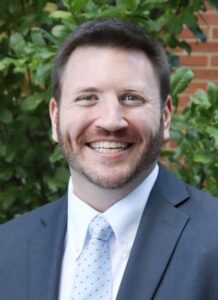
Brian Sabina
Brian Sabina is the Founder and CEO of Clean Energy Terminals. Prior to launching Clean Energy Terminals, Brian was the Chief Economic Growth Officer for the State of New Jersey. In that role, he led the New Jersey Economic Development Authority’s strategic sector development, real estate development, and infrastructure development efforts. Within the offshore wind sector, Brian spearheaded New Jersey’s port, supply chain, and workforce development work. This included helping to shape the ports and economic development approach for NJ’s first three offshore power solicitations, and leading the development of the NJ Wind Port, a $1 billion+ greenfield offshore wind marshaling and manufacturing facility. Brian previously worked at McKinsey & Company where he led projects at the intersection of infrastructure and economic development.

Jonathan Kennedy
Jonathan Kennedy is Clean Energy Terminals’ Chief Development Officer. Prior to joining CET he served as Vice President – Infrastructure at the New Jersey Economic Development Authority, where he oversaw construction of the New Jersey Wind Port, the nation’s first greenfield port dedicated to offshore wind. Jonathan has over 15 years’ experience in infrastructure development in the U.S. and internationally, in roles spanning the public and private sectors. He has published on topics including the P3 risk allocation, construction risk pricing, and energy and urban water sector reform. He formerly served as an expert member of the OECD’s Private Investment in Transport Infrastructure Working Group.

Sloane Perras
Sloane Perras is Clean Energy Terminals’ Chief Legal Officer. Prior to joining CET she served as a Vice President at Foss Offshore Wind, where she developed that company's port growth strategy and spearheaded the acquisition and development of its multi-tenant offshore wind terminal in New Bedford, MA. Sloane is a seasoned corporate executive with over 20 years experience in global logistics, with 10 of those years serving as the General Counsel of both public and privately held companies. She has expertise in closing deals, totaling over a billion dollars in transferred assets; navigating complex regulatory environments; and transitioning companies from turn around status to active growth stages. She is a recognized speaker on a variety of topics including inclusion, enterprise business growth, and workforce development.

Benjamin Nagle
Benjamin Nagle is Clean Energy Terminals' Engineering Manager. Prior to joining CET, he served as an offshore wind project manager at Mott MacDonald, where he executed technical assessment and design scopes for the United States offshore wind industry. His work in offshore wind focused on port infrastructure and transmission, with projects located on the East Coast, West Coast, and Gulf Coast. Benjamin has over 8 years of experience in nearshore and offshore engineering and project execution. Prior to offshore wind Ben was in the deepwater oil and gas industry as Chevron Gulf of Mexico's lead marine engineer. He has expertise in marine infrastructure and facility design, construction, operation, and asset integrity management.
Featured past East Coast project: New Jersey Wind Port
The New Jersey Wind Port is a $1+ billion, 200+ acre, purpose-built offshore wind marshalling and manufacturing facility. Upon completion, it will support 1,500 new jobs and generate over $500 million in new annual economic activity.
In our prior roles, Clean Energy Terminals’ leadership team led the development of the New Jersey Wind Port from concept design through site control, financing, permitting, and construction.
Within one month of launching a formal tenancy process, the project had marshalling lease offers from four offshore developers and manufacturing facility offers from all three major wind turbine OEMs.
Our services
Development
We develop greenfield and brownfield sites that can be utilized for offshore wind manufacturing, staging, assembly, installation, and operations.
- Operations and maintenance bases, with a focus on multi-tenant service operations vessel (SOV) facilities
- Manufacturing sites
- Flexible laydown yards with quaysides
- Staging and integration / marshalling terminals
- Traditional private development or public private partnership (PPP) options available
- Land acquisition or long-term lease structures
- Joint-development partnerships with potential tenants
Advisory
We help governments, port authorities, investors, offshore developers, and OEMs identify and assess port and supply chain development opportunities.
- Port facility development, including site identification and evaluation for investors, offshore developers, and OEMs
- Project development advisory for state and local government entities and port authorities
- Commercial engagement support for governments and port authorities
- Economic impact assessments
- Supply-chain and industrial cluster development strategies
- Workforce development strategies and program development
Homecoming Capital to invest $50M in Clean Energy Terminals
We are excited to announce that Homecoming Capital, an investor in zero-emission infrastructure, has made an initial $50 million commitment to Clean Energy Terminals, enabling us to accelerate early-stage development work across our portfolio of offshore wind port projects.

Contact us
We’d love to talk with you. Please fill out the form below to send us a message or email us directly at info@cleanenergyterminals.com. Please include your phone number in the body of the message if you’d like a call back.
